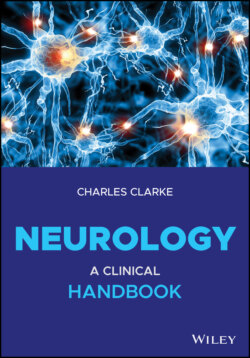Читать книгу Neurology - Charles H. Clarke - Страница 91
Calcium Channels
ОглавлениеCalcium channels are structurally similar to sodium channels, though with slower kinetics. There are three groups:
CaV1.1, one of the L‐type channels has a central role in excitation–contraction coupling in skeletal muscle.
P/Q type channels contribute to triggering neurotransmitter release at presynaptic terminals and are also expressed in the cerebellar cortex.
Transiently activating T‐type, low threshold channels have a role in burst‐firing of thalamic neurones.
Hypokalaemic periodic paralysis (Chapter 10) is caused by mutations of CACNA1S, which encodes the muscle calcium channel. However, mutations of the sodium channel gene SCN4A can give the same phenotype, and most mutations of either channel causing hypokalaemic paralysis affect arginine residues in the S4 voltage sensor. These are positively charged residues and sense the transmembrane potential gradient. Although loss of an arginine residue might be expected to alter voltage activation, hypokalaemic periodic paralysis is actually thought to result from an abnormal cation pathway through a cavity lining the S4 segment, arising from substitution of an arginine residue by a smaller amino acid side chain. The association of paralysis with hypokalaemia may reflect failure of inward‐rectifying potassium channels to stabilise the membrane potential, because these channels fail to conduct when the extracellular potassium concentration is low.
Loss‐of‐function mutations of CACNA1A, which encodes the pore‐forming subunit of the CNS calcium channel CaV2.1, cause episodic ataxia type 2, while gain‐of‐function mutations cause familial hemiplegic migraine.
